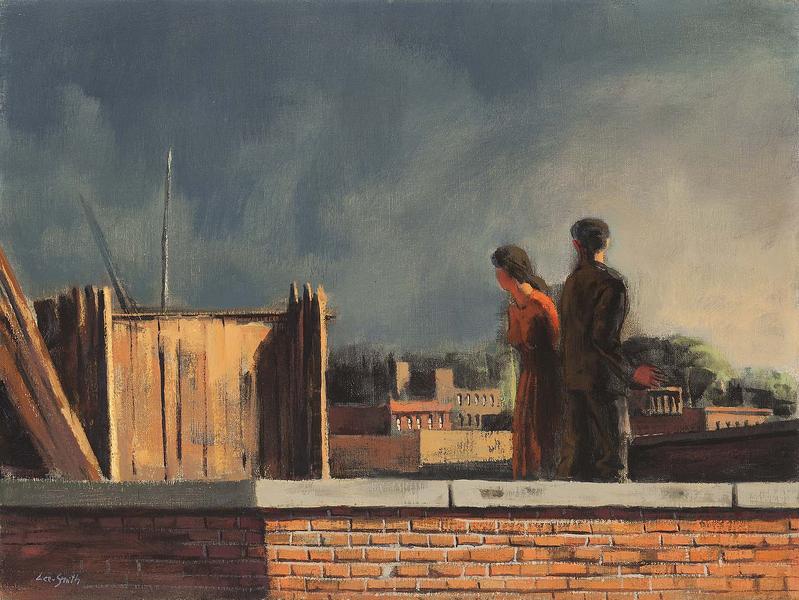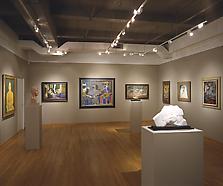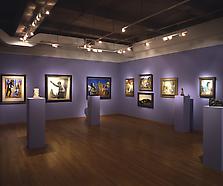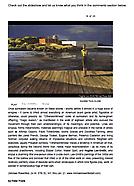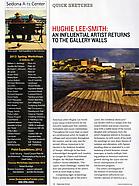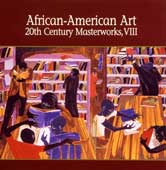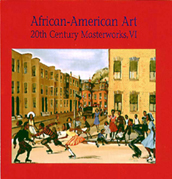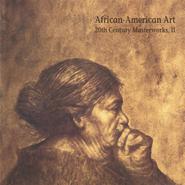
“My earliest direct contact with painting was . . . as a ten-year-old student at the Cleveland Museum. The specific painting that made an impression was Ryder’s ‘Death Riding the Race Track.’ My early attraction to that macabre composition suggests a natural propensity to a romantic perception of reality. . . . In addition to this, in later years I have come to realize the unconscious influence of the Midwestern climate as a key factor in the development of my colour scheme. My predilection for cold, dark skies and sparse, flat landscapes in my painting is undoubtedly due in large measure to the long, continuously grey winters of my youth in Ohio, Michigan and Ontario.” (1)
"Scientists have belatedly discovered what metaphysicians have known all along: that the visible external world can be defined only in relation to man and his inner world." (2)
Born in Eustis, Florida in 1915 to parents who divorced soon after his birth, Hughie Lee-Smith (who added the hyphen to his name as a teenager to give it more artistic panache) spent his early years in Atlanta, Georgia under the care of his maternal grandmother while his mother pursued a singing career in Cleveland. Lee-Smith’s grandmother lived a middle-class lifestyle with its attendant values of respectability and education, and she strove to impart these standards to her grandson. Therefore, she exerted considerable control over Lee-Smith’s friendships and leisure activities. While her monitoring facilitated Lee-Smith’s intellectual growth, at times it also left him feeling removed from the life around him, particularly when forms of mass entertainment like fairs and carnivals came into town. As Lee-Smith once recalled, “Every time [the carnival] appeared I was utterly fascinated with the sights and sounds: the carousel music, the ribbons, pennants, balloons and riotous colors. But, of course, I was never allowed to attend. For, in my grandmother’s perception, the carnival was low-class and iniquitous. (3)
His grandmother’s prohibition against “low-class” entertainment (and the people who consumed it) added to a sense of alienation that Lee-Smith felt throughout his life, and that he principally attributed to the estrangement of the artist—who must perpetually observe the world from a distance—as well as exclusion as a black man from a US culture that defined itself through whiteness and often rejected African Americans from the national imaginary through caricature, discrimination, and violence. (4) The fairground’s promise of delight and inclusion would come to haunt Lee-Smith’s paintings, which are full of carnivalesque elements that only add to a pervading sense of isolation, often because they seem blissfully indifferent to the condition of the people near them.
By 1925, Lee-Smith’s mother had established herself as a singer, and Lee-Smith and his grandmother went to live with her in Cleveland. The two women nurtured Lee-Smith’s talent for drawing and painting. His mother enrolled him in Saturday classes at the Cleveland Museum of Art in 1925, and just two years later, he moved on to more advanced courses at the Cleveland School of Art (now the Cleveland Institute of Art). After finishing high school in 1934, Lee-Smith won a scholarship from the Scholastic Awards exhibition held at Pittsburgh’s Carnegie Institute, which enabled him to study at the Detroit Institute of Arts and Crafts for a year. The following year, he received a full scholarship from the Gilpin Players acting troupe of Cleveland’s Karamu House—a settlement house in Cleveland’s Fairfax neighborhood devoted to serving the educational and cultural needs of the surrounding black community—and pursued a degree at the Cleveland School of Art. The importance of Lee-Smith’s association with Karamu House extended beyond his being able to finance his education. A condition of the scholarship was that recipients spend a year teaching at the settlement, and in 1935, Lee-Smith and fellow Cleveland artists Elmer Brown and Charles Sallée co-founded the Cleveland Karamu House Artist Association. Karamu House was also home to the nation’s first African American theater company, and Lee-Smith—whose passion for the arts extended to dance, music, literature, and theater—was surrounded by the theatrical elements that, like the carnival, would play a significant role in his later paintings.
In 1938, Lee-Smith graduated with honors from the Cleveland School of Art, and worked for the Federal Arts Project of the Works Progress Administration (WPA). Like many WPA artists, Lee-Smith was concerned about the contribution art could make to the struggle for social justice and racial equality, and he created a series of lithographs on this theme. In 1943, he was drafted into the US Navy and stationed at the Great Lakes Naval Base, near Chicago, Illinois. While there, Lee-Smith became involved with the South Side Community Art Center (SSCAC), through which he met key Chicago artists like Archibald J. Motley Jr., Charles Sebree, and Charles White. In 1944, Lee-Smith collaborated on a collection of murals depicting the history of black Americans in the Navy, and in 1947, the Navy donated these painting to the SSCAC.

